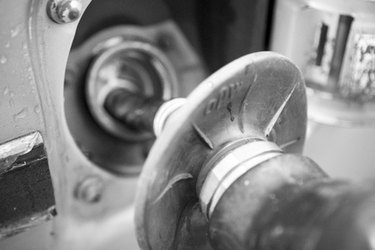
Most modern cars are equipped with electric fuel pumps that are mounted either inside the gas tank or in-line with the fuel line. Older vehicles were typically equipped with mechanical fuel pumps that mounted to the engine and used a rubber diaphragm to pull gasoline from the gas tank and push it to the engine. Mechanical fuel pumps can fail to operate properly or not at all when the diaphragm becomes damaged or wears out.
Leaking
A fuel pump with a defective diaphragm may be torn or have developed holes from wear. These tears or holes allow fuel to escape past the diaphragm and exit the fuel pump housing. A leaking fuel pump can be noticed as fuel droplets or puddles on the ground and a strong smell of gasoline when the car is running. Leaking diaphragms are likely to eventually fail completely and cause the engine to abruptly stop running.
Stalling
A bad fuel pump diaphragm will cause the fuel pump to produce less fuel pressure than is necessary for proper operation of the engine. This low fuel pressure causes less gas to be supplied to the engine, resulting in fuel starvation and a too lean air-fuel mixture at the carburetor. The end result is hesitation and stalling when the vehicle is driven.
No Starting
A badly damaged fuel pump diaphragm will be unable to pump fuel, causing a total loss of fuel pressure and no gas to be supplied to the engine. As a result, there will be no fuel to produce the proper fuel-air mixture and no combustion within the cylinders when the engine is turned over. The end result is an engine that will turn over but will not start.